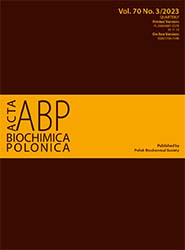Circular RNA METTL15/miR-374a-5p/ESCO2 axis induces colorectal cancer development
Abstract
This study investigated the biological role and mechanism of circMETTL15 in colorectal cancer (CRC). Cancer tissues and matched adjacent normal tissues were collected. CircMETTL15, miR-374a-5p, and ESCO2 levels were detected by RT-qPCR and Western Blot. LoVo cells were selected for loss- and gain-of-function assays and rescue assays. Cell proliferation was detected by CCK-8 and colony formation tests, cell apoptosis and cell cycle were detected by flow cytometry, cell migration and invasion were detected by Transwell assay, and protein expression of ki-67, E-cadherin, N-cadherin, and cleaved caspase-3 was detected by Western blot. Through bioinformatics analysis and verification assays, the targeting relationship between circMETTL15, miR-374a-5p, and ESCO2 was studied. The results suggest that circMETTL15 was a stable circRNA that was highly expressed in CRC tissues and cells and was associated with tumor size, higher TNM staging, and lymph node metastasis in CRC patients. Functionally, knocking down circMETTL15 inhibited the proliferation, migration, invasion, and EMT of LoVo cells, and induced apoptosis. Overexpression of circMETTL15 showed the opposite effect. The effects of knockdown or overexpression of circMETTL15 on the biological behavior of LoVo cells were reversed by knockdown of miR-374a-5p or knockdown of ESCO2, respectively. Mechanistically, circMETTL15 acts as a ceRNA for miR-374a-5p to regulate ESCO2 expression, thereby promoting the biological behavior of LoVo cells. In conclusion, the results of this study reveal the role of circMETTL15 in CRC and the underlying molecular mechanism, which provides potential data support for the development of future CRC drugs.
Copyright (c) 2023 Feng Guo, Yang Luo, GuangYao Ye, WeiJun Tang

This work is licensed under a Creative Commons Attribution 4.0 International License.
Acta Biochimica Polonica is an OpenAccess quarterly and publishes four issues a year. All contents are distributed under the Creative Commons Attribution-ShareAlike 4.0 International (CC BY 4.0) license. Everybody may use the content following terms: Attribution — You must give appropriate credit, provide a link to the license, and indicate if changes were made. You may do so in any reasonable manner, but not in any way that suggests the licensor endorses you or your use.
Copyright for all published papers © stays with the authors.
Copyright for the journal: © Polish Biochemical Society.


